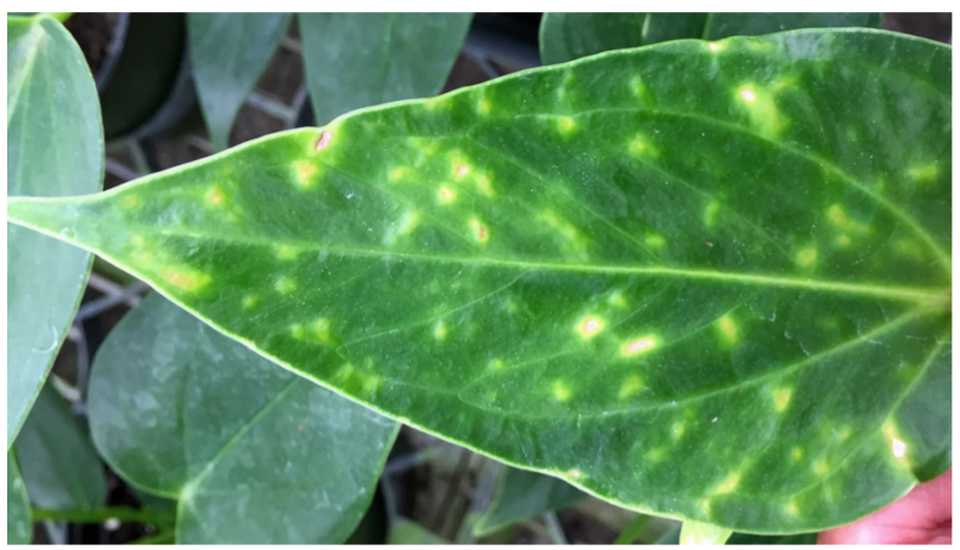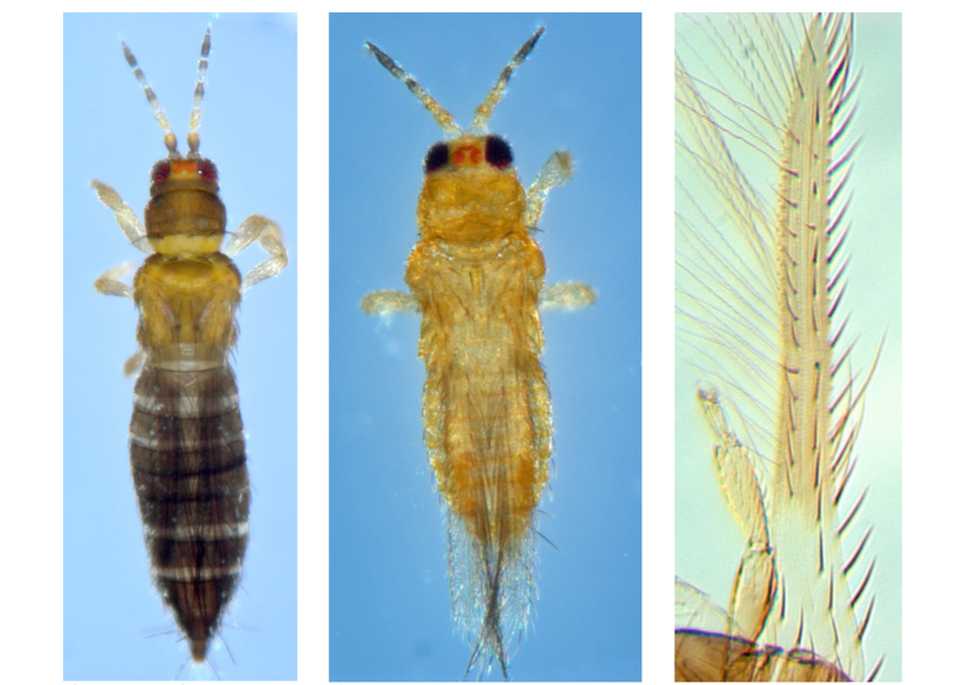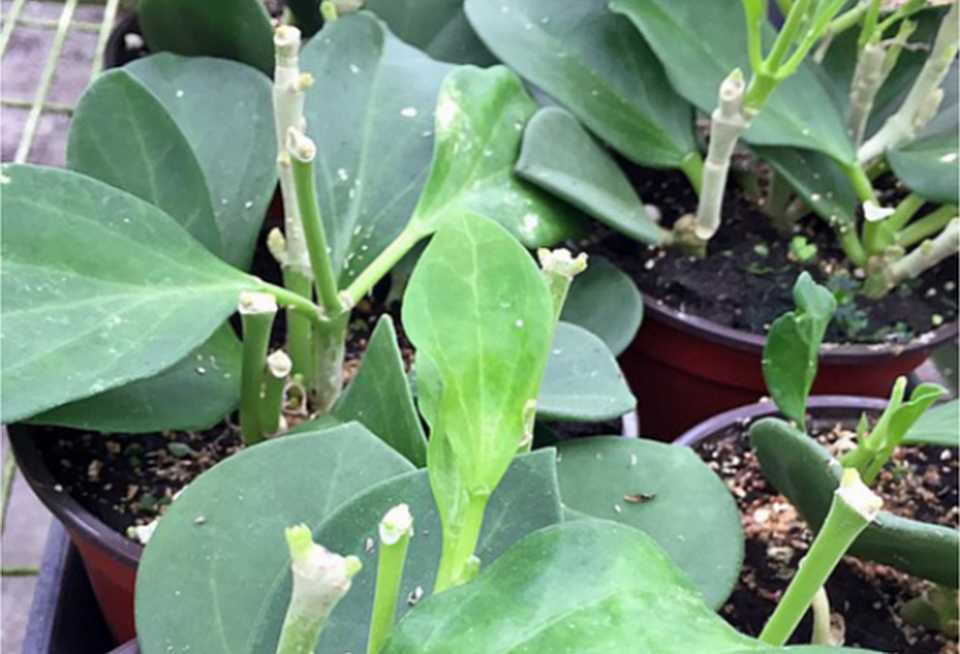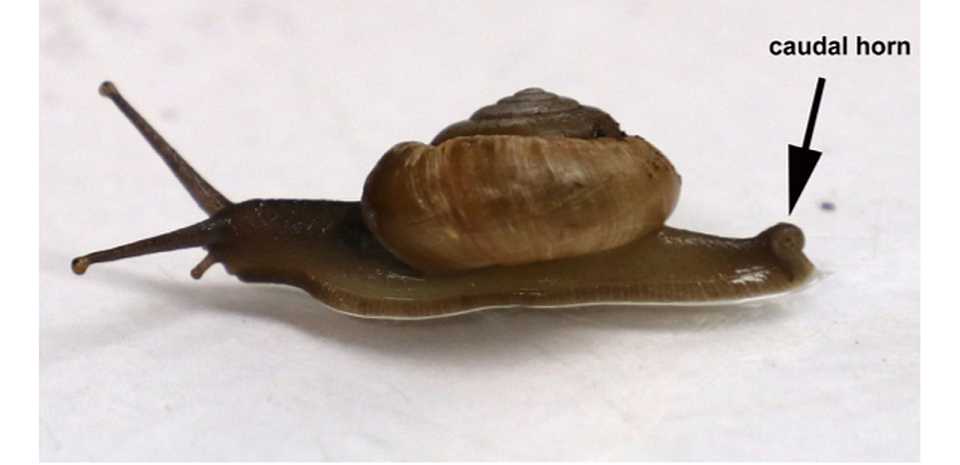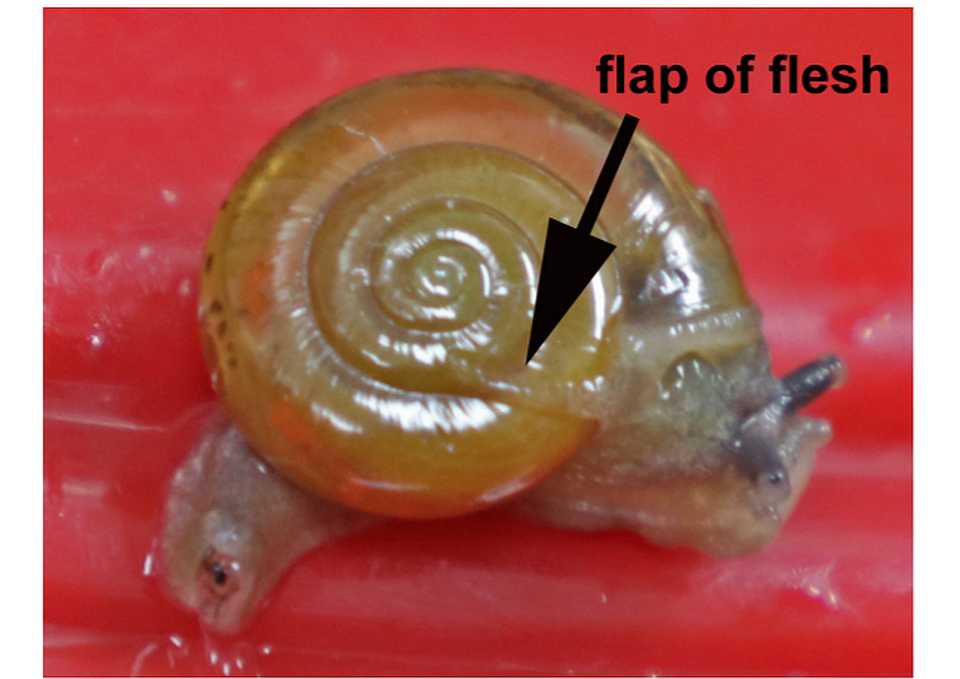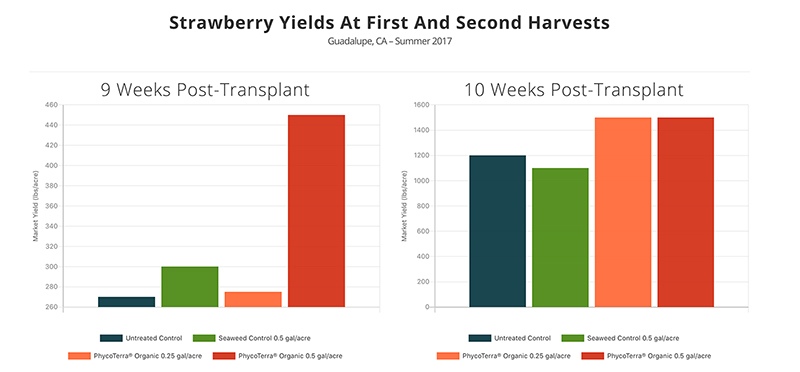Double Trouble for Florida Growers? 2 More Exotic Pests Found
Florida is certainly no stranger to invasive plant pests and diseases. And that fact continues to grow as the Florida Department of Agriculture and Consumers Services’ Division of Plant Industry (FDACS-DPI) recently issued two separate pest alerts — one for Thrips parvispinus and another for the horntail snail.
Thrips parvispinus Karny
FDACS-DPI reports a sample of thrips collected in a Central Florida greenhouse on Hoya and Anthurium and later identified as Thrips parvispinus (Karny). The find was not only a first for Florida, but also for the continental U.S.
This species is native to the Asian tropics. However, during the last 20 years, the species has been expanding its range and is now found in Greece, France, Spain, The Netherlands, Tanzania, Mauritius, Reunion, and Hawaii.
According to FDACS-DPI officials, barcode sequences from specimens collected in the Orange County greenhouse are identical to those found in Thrips parvispinus populations in Indonesia.
Here are some helpful pest specs provided by FDACS-DPI:
IDENTIFICATION: Females and males differ in size and color. Females are nearly 1 mm long, with brown head and prothorax, yellowish brown meso- and metathorax and black abdomen; forewings are dark, with light-colored base; the third antennal segment and the base of the fourth and fifth segments are light colored (either yellow or white). Males are 0.6 mm long and evenly yellow.
HOSTS AND DAMAGE: T. parvispinus is polyphagous with the preferred hosts varying across its geographic distribution. In regions where the species has been long established, the crops most affected are papaya, peppers, potatoes, eggplants, beans, shallots, and strawberries. In Indonesia, field pepper yield losses due to T. parvispinus reach 23%.
Most damage is produced by direct feeding of larvae and adults on leaves and growing buds.
Under controlled conditions on chili pepper (Caspicum annuum L.) in greenhouses, the life cycle is completed in 13 to 14 days. Eggs are inserted into leaves; after four to five days, larvae hatch to feed on leaves and flowers. Larvae go through two molts in four to five days, mature and pupate. The two pupal stages last two to three days. Reproduction is sexual and on average females lay 15 eggs. Mated females live nine days. Adult males live six days.
What to do if you suspect this pest? Hand collection of the pest is the most effective, says FDACS-DPI, with an aspirator either directly from leaves, buds and flowers, beating plants on a light color tray or collecting young, curled leaves directly into alcohol. Specimens should be submitted to the DPI for confirmation.
Horntail Snail
Earlier this month, a gastropod enthusiast collected unusual snails in Coconut Grove, FL, and sent them to the University of Florida where they were identified as Macrochlamyis indica Benson (Ariophantidae), a pest snail native to India. This identification was confirmed by USDA’s Animal and Plant Inspection Service and the Molecular Diagnostics Laboratory at the FDACS-DPI.
The genus Macrochlamys contains more than 100 species and is found throughout tropical Asia. This snail is known from Bangladesh and throughout India. It has been reported from citrus in Egypt.
IDENTIFICATION: The common name “horntail snail” is given to M. indica because of the pointed, fleshy protrusion (caudal horn) at the tip of its tail. The caudal horn is found in only one other species in Florida, Ovachlamys fulgens (Gude) (Helicarionidae), known as the jumping snail.
The horntail snail has a shell 16 mm to 18.5 mm in diameter, about the size of a dime, which is amber colored and delicate. When alive and relaxed, M. indica has a flap of flesh that extends backward onto or around the shell. This character will separate M. indica from all other terrestrial snails in Florida. The shell is not ribbed and the umbilicus is partially open. The aperture of the shell is not flared around its edges.
HOST AND DAMAGE: M. indica is a well-known, high-risk pest in India, feeding on a wide variety of commercially grown plants including cole crops, beans, lettuce, moringa, yams, chrysanthemum, and cucurbits. The snails are voracious feeders and will consume seedlings entirely.
SURVIVAL AND SPREAD: It is most active at night and after rainfall. During periods of dry, hot weather, the snail will burrow into the ground or seek cool, damp places. The horntail snail is known to live up to four years and can lay 45 to 900 eggs per year after maturing at an approximate age of four months. The small, 3 mm to 3.5 mm eggs are translucent, round and tough. They are laid in soil or moist interspaces between bricks of old walls. Egg-laying starts when the shell length reaches 10.5 mm and the gestation period is 10 to 17 days.
MANAGEMENT: Little information is currently available on the best control methods available in the U.S.




